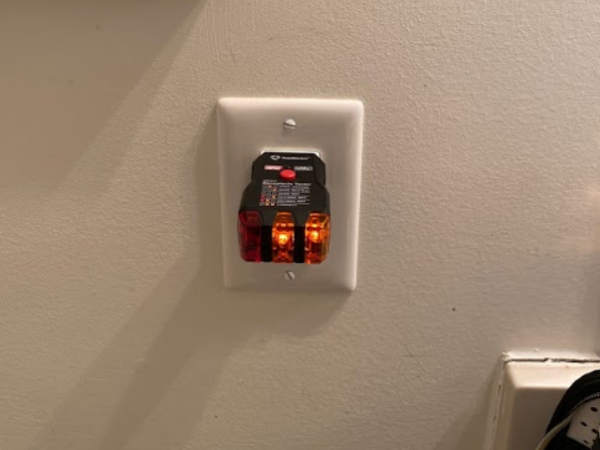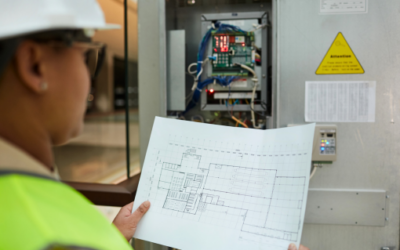When buying or selling a home, an electrical inspection is a crucial part of the process. Many home inspections uncover electrical issues that can pose safety hazards, fail code compliance, or result in costly repairs. Understanding these common problems and their solutions can help homeowners address them proactively.
1. Outdated Electrical Panels
Issue: Many older homes still have outdated fuse boxes or panels that can’t handle modern electrical demands. Some homes may even have unsafe panels from brands like Federal Pacific, Zinsco, or Challenger, which are known fire hazards.
Solution: Upgrade to a modern circuit breaker panel that meets current National Electrical Code (NEC) standards. A licensed electrician can replace an outdated panel with one that provides better capacity, efficiency, and safety.
2. Knob-and-Tube or Aluminum Wiring
Issue: Homes built before the 1970s may have knob-and-tube wiring or aluminum wiring, both of which can be fire hazards due to poor insulation and loose connections over time.
Solution: Replace outdated wiring with copper wiring to ensure better conductivity and safety. If a full replacement isn’t feasible, remediation options such as pig-tailing aluminum wiring with copper connectors can help reduce risks.

3. Ungrounded Outlets and Missing GFCI Protection
Issue: Older homes often have two-prong ungrounded outlets, which lack the safety features of modern three-prong outlets. Additionally, many homes are missing Ground Fault Circuit Interrupter (GFCI) outlets, which are required in kitchens, bathrooms, and outdoor areas to prevent electrocution.
Solution: Replace two-prong outlets with properly grounded three-prong outlets. Install GFCI outlets in areas exposed to moisture, such as bathrooms, kitchens, and laundry rooms.

4. Overloaded Circuits and Insufficient Outlets
Issue: Modern homes require more power due to appliances, entertainment systems, and smart home devices. Older homes often have fewer outlets and circuits that become overloaded, causing frequent tripped breakers or overheating.
Solution: Install additional dedicated circuits for high-power appliances and add more outlets to reduce overloading. Consider upgrading to arc-fault circuit interrupters (AFCIs), which provide enhanced fire protection.
5. Improper DIY Electrical Work
Issue: Many homeowners attempt DIY electrical fixes that lead to code violations, unsafe connections, or improperly installed wiring, switches, and junction boxes.
Solution: If an inspection reveals amateur electrical work, hire a licensed electrician to correct faulty installations and bring the system up to code.

6. Exposed Wiring and Open Junction Boxes
Issue: Exposed wires and open junction boxes increase the risk of electrical shocks and fire hazards. These issues are often found in basements, attics, and garages where unfinished wiring is more common.
Solution: Properly enclose all wiring in junction boxes and use conduit or protective covering where necessary to meet code requirements.
7. Inadequate Grounding and Bonding
Issue: Some older electrical systems lack proper grounding, which can lead to shock hazards and power fluctuations. Grounding issues are especially common in older homes that haven’t been updated to meet modern safety standards.
Solution: Upgrade the grounding system by installing grounding rods and ensuring that the electrical panel and outlets are properly bonded and grounded.
8. Faulty or Inconsistent Wiring
Issue: Some homes have mixed wiring types, loose connections, or wires that aren’t secured properly. These issues can cause intermittent power loss, flickering lights, or even electrical fires.
Solution: Have an electrician perform a thorough inspection and rewire problem areas to ensure safe and consistent power delivery.
How often should I get an electrical inspection?
It’s recommended to have an electrical inspection every 5-10 years for homeowners and every 3-5 years for businesses. Inspections are also crucial before buying or selling a home.
What are the most common electrical issues found in home inspections?
Common issues include outdated panels, ungrounded outlets, missing GFCI protection, exposed wiring, and improper DIY electrical work.
Can electrical issues affect my home sale?
Yes! Electrical problems can lead to failed home inspections, delayed sales, and even reduced property value. Addressing these issues beforehand can streamline the sale process.
Are old electrical panels dangerous?
Yes, outdated panels like Federal Pacific and Zinsco can pose fire hazards due to faulty breakers. Upgrading to a modern panel improves safety and efficiency.
Can I fix electrical issues myself?
While minor repairs like outlet replacements may be DIY-friendly, major electrical work should always be handled by a licensed electrician to ensure safety and code compliance.
Final Thoughts: Be Proactive About Electrical Safety
If you’re buying or selling a home, addressing electrical issues before closing can prevent costly delays and ensure compliance with modern safety codes. Regular electrical inspections help keep your home safe, energy-efficient, and market-ready.
Need an Electrical Inspection or Repairs? 📞 Call Let There Be Light Electric at 504-729-8902 or Request an Inspection Online today!


0 Comments